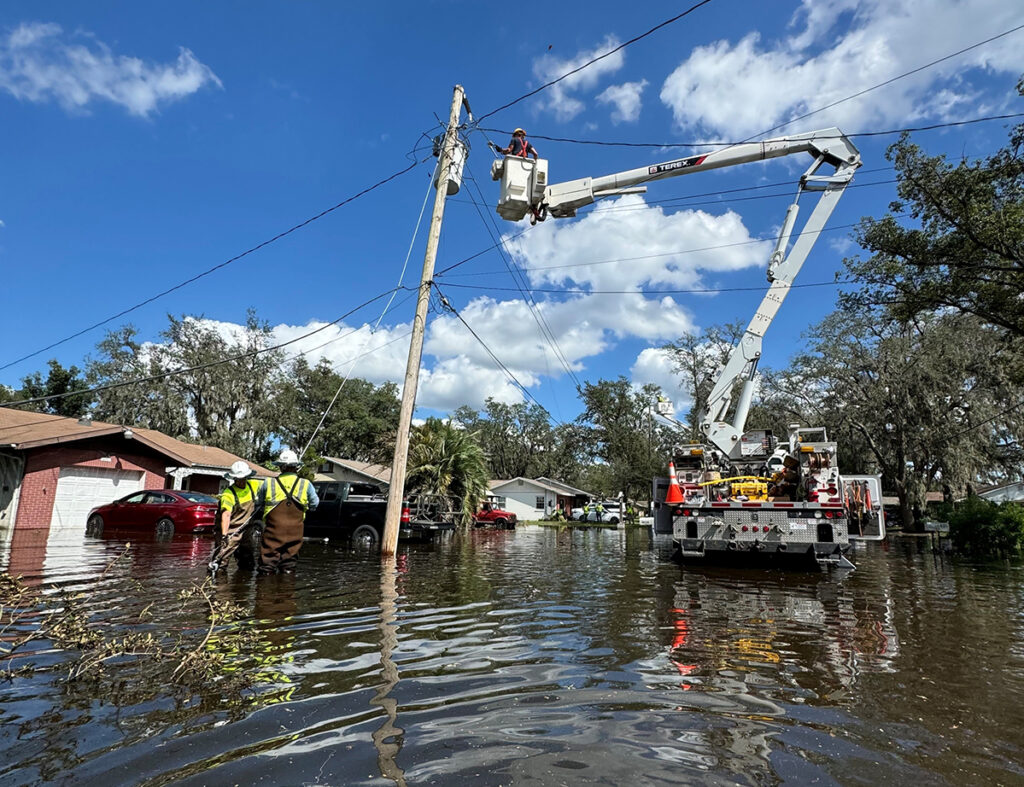
Editor’s note: This is the final installment in our series of stories looking back at Hurricane Helene’s impact on electric cooperatives. Read the rest of the series here.
Last October, Withlacoochee River Electric Cooperative needed help and the Boy Scouts came to the rescue.
One of the nation’s largest co-ops, Withlacoochee usually rides out storms with its own staff, as it did with Hurricane Helene. Twelve days later, Milton roared across its Florida territory, causing monumental flooding and damage, and the co-op finalized a tent city to house hundreds of outside lineworkers. But the night before operations kicked in, the base camp contractor informed Withlacoochee that it would be unable to feed the crews breakfast a few hours later.
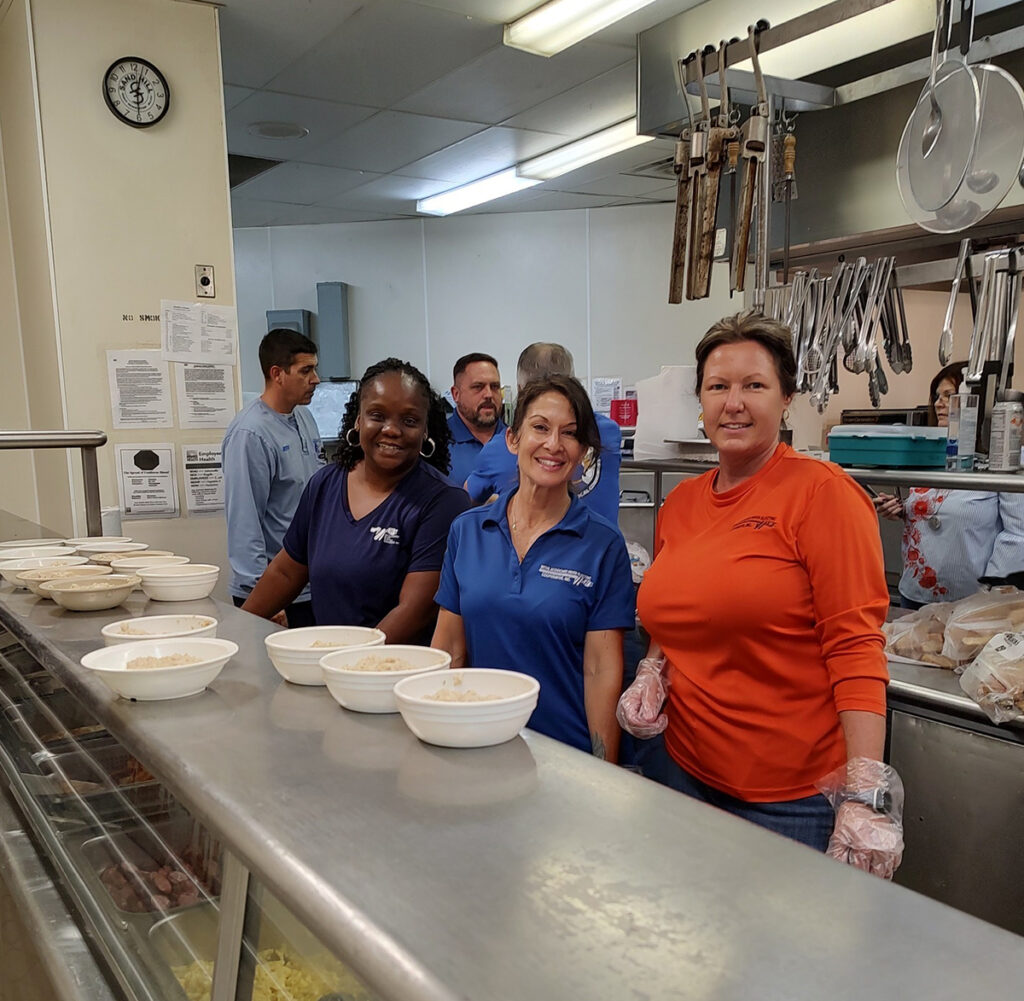
Enter the Boy Scouts and their encampment at Spring Hill, 30 miles northwest of the co-op’s Dade City headquarters. From stores near and far, Withlacoochee bought food to nourish 600 men. Overnight, employees, community members, and Ranger Daniel Tremblay and his wife stepped in to help. On the morning of Oct. 10, breakfast was served.
“Out of the Boy Scouts kitchen, we started feeding. They came in, cooked and helped us feed when we didn’t have any other help,” said David Lambert, executive vice president and general manager at Withlacoochee. “We’d long supported scouting and supported their mission. Never in my lifetime did I think we would need to use their facilities as a base camp to help us.”
Partnerships between co-ops and their communities are essential components of power restoration and even more so when one of the worst storms ever to hit you is immediately followed by the worst.
Warm-up hurricanes

In September and October, Helene and Milton delivered a one-two punch to Withlacoochee, which serves about 270,000 members across five central Florida counties—and add Debby in early August to make it a one-two-three blow.
“It was unimaginable, let’s just put it that way,” Lambert said. “We had just come off of Debby and that caused a little bit of coastal flooding, primarily in our farthest north county, Citrus. Then, a month later, we had Hurricane Helene and it was a wall of water on the coast. Some homes had 18 feet of water in them.”
As Helene moved north and waters surged, Lambert and his staff watched from the Dade City control center as four feet of water swept into a substation on U.S. 19 near the coast. Co-op crews were on the scene almost immediately because there was no time to waste—in addition to bringing back power to 110,000 members, Helene became a matter of saving lives and property.
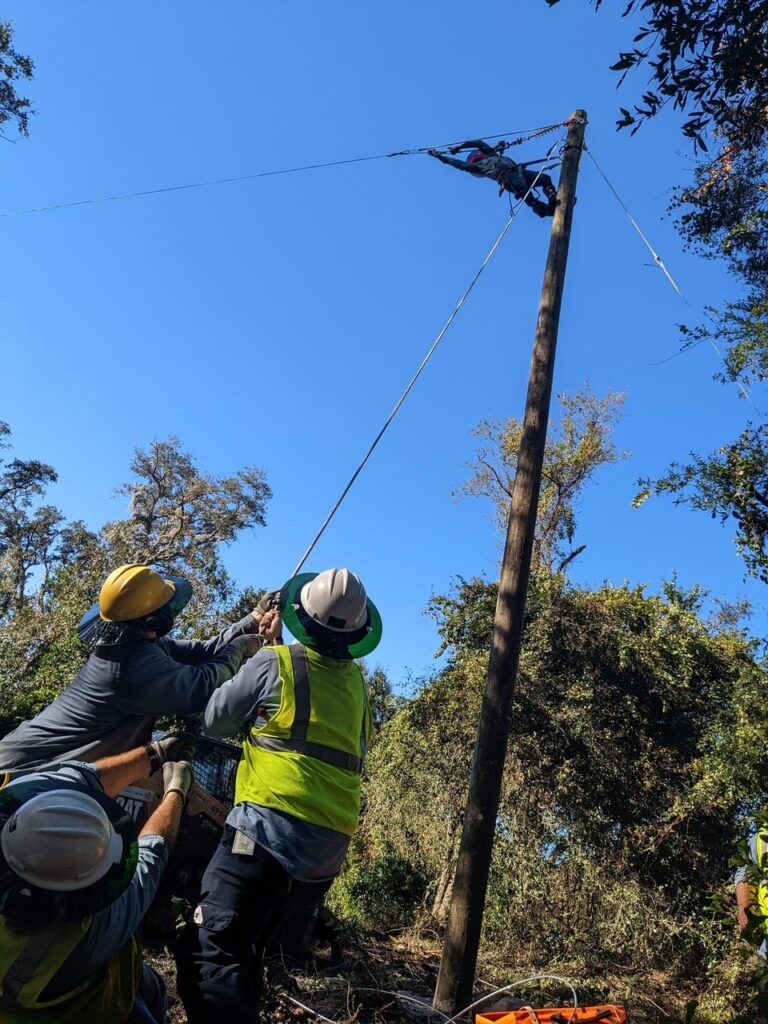
“When the water recedes, the clock is ticking,” said Gary Steele, manager of member relations. “You’ve got to get that drywall out. You’ve got to get that carpet up. You’ve got to get all those appliances out of the house. You’ve got to get it dry so you lose as little as possible.”
With a Herculean effort, Withlacoochee had almost all lines repaired within 48 hours. However, officials in one county wouldn’t let the co-op flip the switch to damaged homes until they passed an electrical inspection. Knowing electricity was essential to the drying process, Withlacoochee got thousands of meters ready to roll as soon as it got the go-ahead and worked behind the scenes to expedite the process.
“We would have that account back up as soon as we got the release [from the county] because we knew that people were literally standing outside those homes with all their belongings, their toothbrush, their TV and every ounce of clothes they had on the curb,” Steele said. “They had fans and were waiting on power to turn on those fans and dry the two-by-fours in the house.”

On its social media sites and in interviews, Withlacoochee established itself as a go-to communications hub to help members and non-members navigate the procedure to get their meters spinning.
“We’re so involved in the community. We believe we are the No. 1 trusted partner in our community,” Lambert said. “We build strong communities. Anybody can provide electricity. We build strong communities. That’s our whole philosophy.”
Milton tested that philosophy.
One-of-a-kind storm
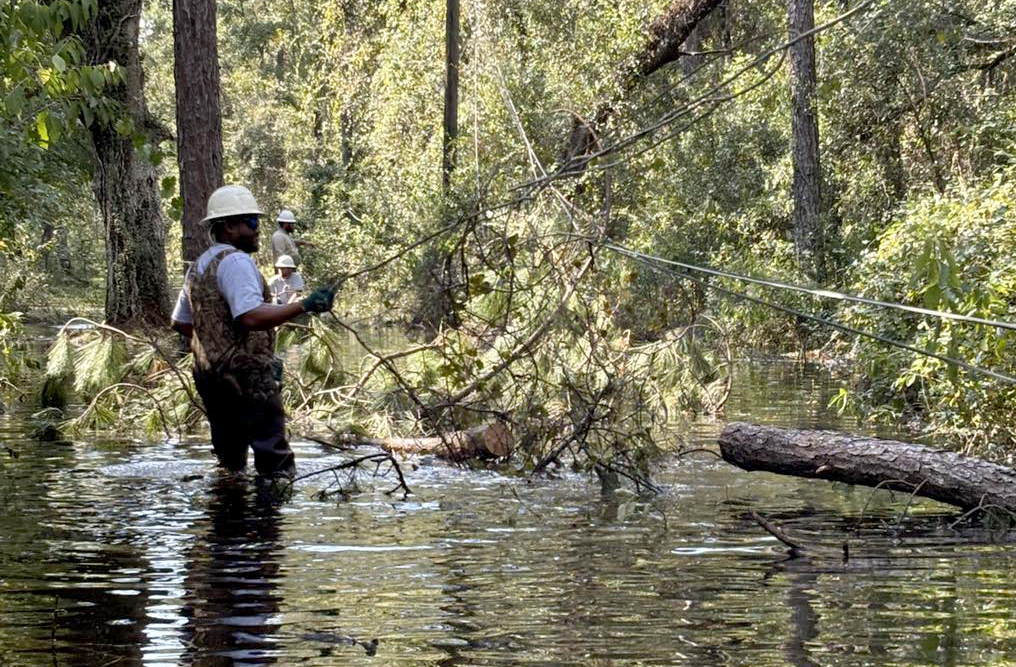
Withlacoochee felt so confident about post-Helene repairs that it prepared to send crews to Georgia co-ops still staggered by the Category 4 hurricane. Lambert headed to an NRECA Regional Meeting in South Carolina and got as far as Jacksonville when his phone sounded an alert.
What was thought to be a tropical storm was turning into something much worse. Milton rapidly strengthened on Oct. 7, becoming one of the most intense Atlantic hurricanes on record with winds of 180 mph. Lambert made a U-turn and, by 11 a.m., was sitting with Steele and staff members calling contractors and arranging for support.
“By that night, the reports were that it was going to be a Category 3 or 4,” Steele said. “It kept getting worse and worse as the hours ticked by and it was amazing how quickly a storm that was supposed to be nothing more than just a little bit of wind and rain turned into the worst storm we’ve ever seen.”
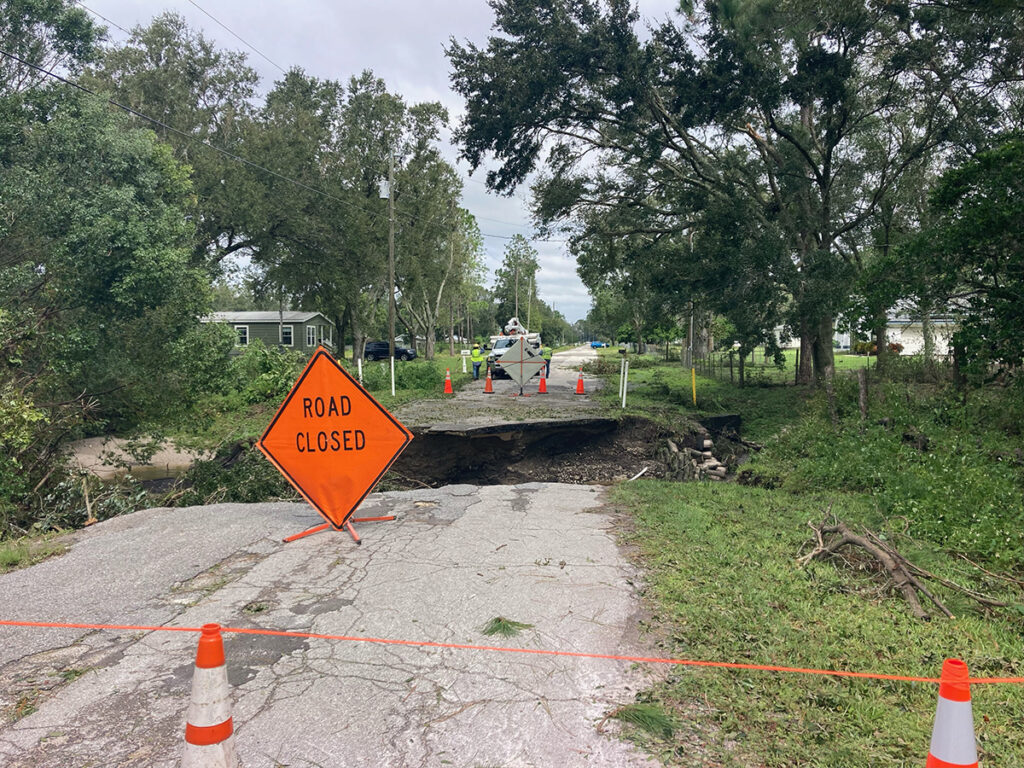
From the control center, they had watched Helene flood coastal communities. On Oct. 9, Milton, now a Category 3, flooded them. The Dade City control center is underground, a little like a bomb shelter. Water started pouring through the bottom floor. The staff tried to keep one eye on the cameras while catching water in buckets. Tree after tree fell outside the corporate office. Staffers sawed their way to freedom.
“The water damage was so bad that we lost all communications to all of our substations and we have our own fiber network,” Lambert said. “This office used to be covered in gigantic oak trees. You hardly see any here. We couldn’t even get out of the building. It was that bad.”
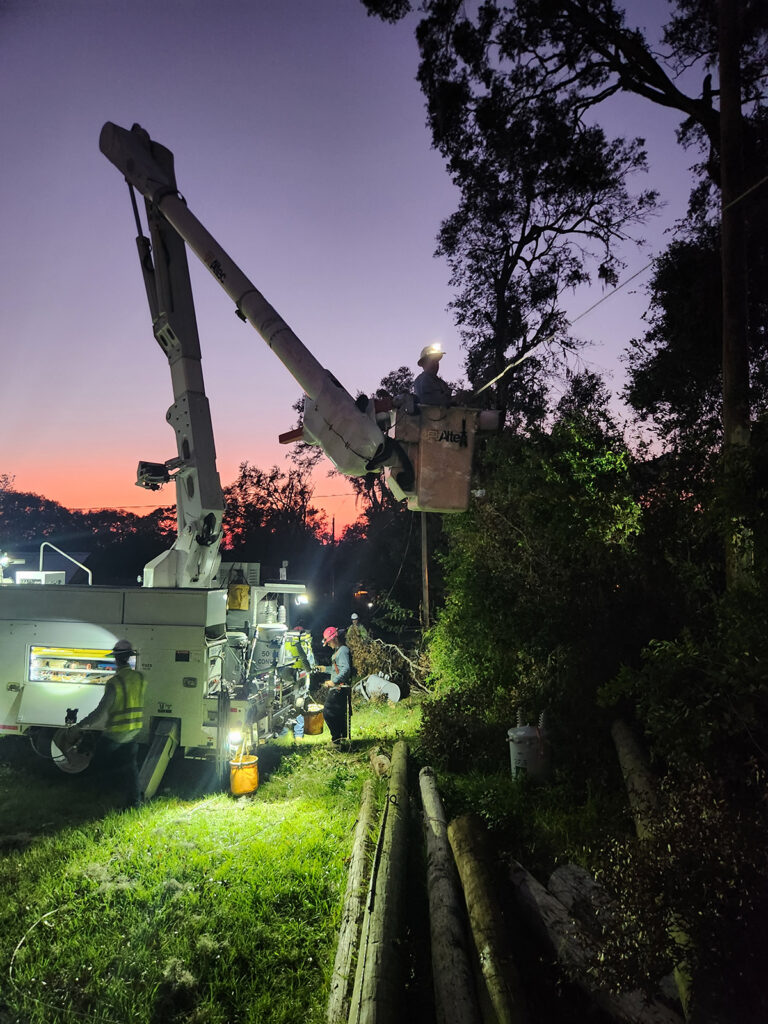
The scene at the control center was repeated time and again across Withlacoochee’s service area, wind and water damage on a scale unseen in its 78-year history. Almost 204,000 members were without power. At one point, Milton spawned an estimated 26 tornados in the territory.
But Helene came first, and co-ops from Georgia to Kentucky were still soaking up all available manpower and resources. In 2023, when Lambert took over as general manager, he started to review and add contracts for storm assistance as a measure of security. “We had 15 storm contracts. We started calling every single one of those folks because we knew Milton was coming in. We got to the eighth storm contract before anybody would even pick up the phone.”
That’s when partnerships came into play. For the first time, Withlacoochee couldn’t handle a storm on its own. Lambert called Katherine Domingue, CEO and general manager at SLEMCO in Lafayette, Louisiana. Within hours, a team of 30 SLEMCO lineworkers was on its way, escorted onto the highway by the Louisiana State Police. “It was probably one of the biggest reliefs we had had when Katherine picked up the phone at SLEMCO and said, ‘Absolutely, we’ll send you help,’” Lambert said.
Crews from Central City-based DEMCO, which abuts SLEMCO, and co-ops in Texas and Arkansas soon followed. In all, about 2,000 lineworkers and related personnel were on the ground at Withlacoochee. “I get goose bumps about it because we love and appreciate all the crews that came to help,” Lambert added.

The challenge they faced was stunning. Crews chopped through 200-year-old oak trees and waded through waist-high water just to get downed wires. Contractors from as far away as California and Canada supplemented crews from Withlacoochee and other co-ops. Restoration required specialized equipment from contractors in Georgia.
“One piece of equipment would get stuck and they would be bringing another one right behind it with winches to get it out. Then we would have to bring in track dozers to get even further into certain areas,” Lambert said.
A video of DEMCO crews went viral worldwide. Three lineworkers are up to their chests in water in what used to be a neighborhood when another suddenly surfaces, drenched but clutching the piece of cable for which he dove underwater.
“We knew it was going to be bad, but we never dreamed it was going to be as bad as it was. But we also never dreamed that we would be 95% restored in 70 hours, too,” said Lambert, adding that 100,000 members were back online within about 24 hours, thanks to skilled workers, multiple backfeeds and the Boy Scouts.
Tremblay and the Boy Scouts eagerly answered the call when Withlacoochee reached out about using their land and facilities as a makeshift camp for hundreds of lineworkers. Again, a relationship with meaning, Lambert noted, a reversal of roles from Withlacoochee’s long-term financial and resource support of Scouting America and the youth community.
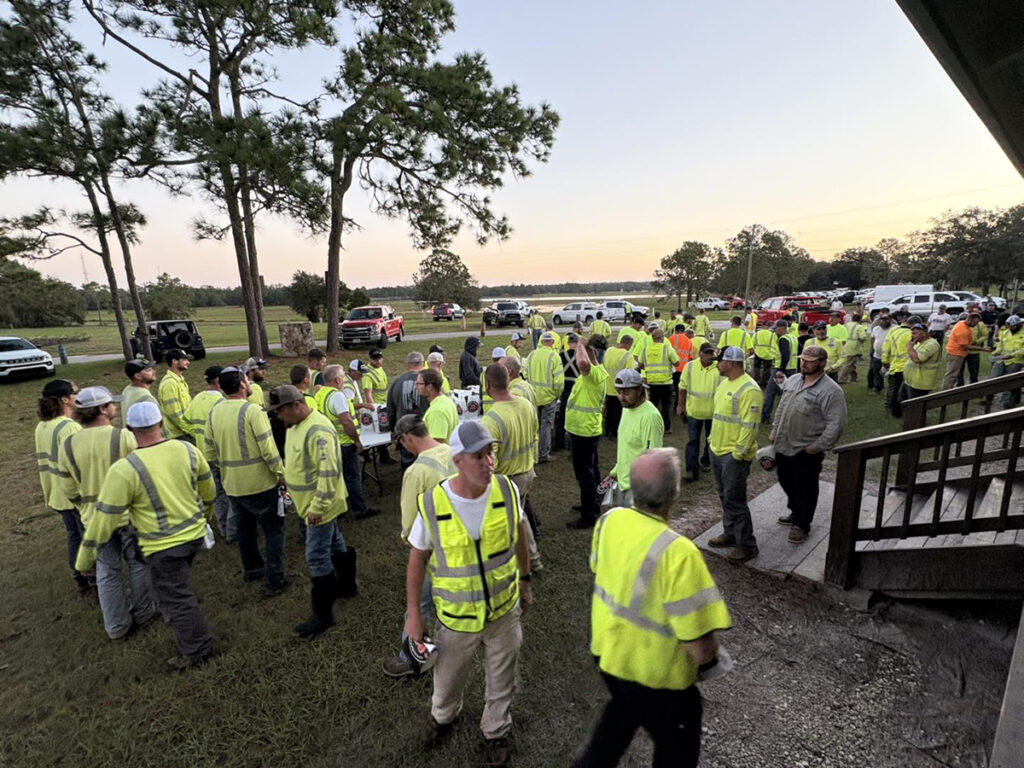
After all, if incoming crews to Withlacoochee were not greeted with food and a welcoming attitude, things could have turned out differently, he said.
“Part of that is feeding them breakfast, relying on those relationships and getting those 600 people in the community on day one. That made a huge, huge, impact on our restoration. At a minimum, had we delayed those crews and got them later, that’s one more day our folks would have been without power.”
The forever flood

The hurricane had passed, but the nightmare was just beginning. Shamonique Simmons is part of the accounting department at Withlacoochee, where she started as a customer service representative 15 years ago. Simmons left her three-bedroom house in the Ridge Manor section of Hernando County to go to work on a Friday morning, 10 days post-Milton.
She would not see her house again for a month. Her neighborhood of 100 homes is surrounded by lakes that flooded over ridges and contours as the Green Swamp in central Florida drained the excess rain from Milton, feeding rivers and streams. Though her home was about 200 feet from a lake, three to four feet of water gushed into her property and washed away her world.
“I almost cried,” she said of the first time she was allowed to return to the property. “I had to hold it together, though. It was sad.” Simmons stayed with relatives; friends helped her trash everything and then worked on rebuilding this summer.
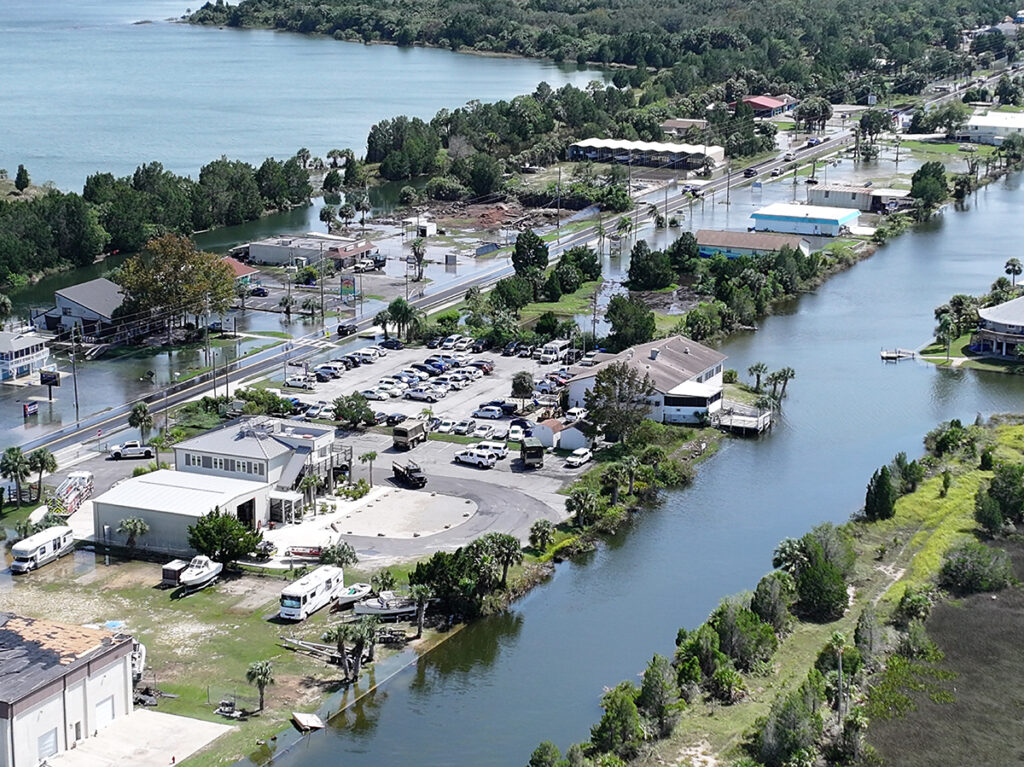
Gloria Blankenship, a soothing voice on the member services line for 24 years, lives in the same Lakewood subdivision, about a mile from the nearest lake. She was in her one-story house for 23 years until the remnants of Milton, 10 days later, kicked out her and her husband.
A friend displaced by the storm was staying with the Blankenships, who thought their home was on secure ground. As water rose, the friend called her—you need to get home; the water is rising.
“It’s never flooded in that area since I’ve been there. As soon as I started seeing it happen, I was a little in shock and so was that part of the neighborhood,” she said. “All I could think of is, ‘What do I need to grab and just get out of here?’” Blankenship said.
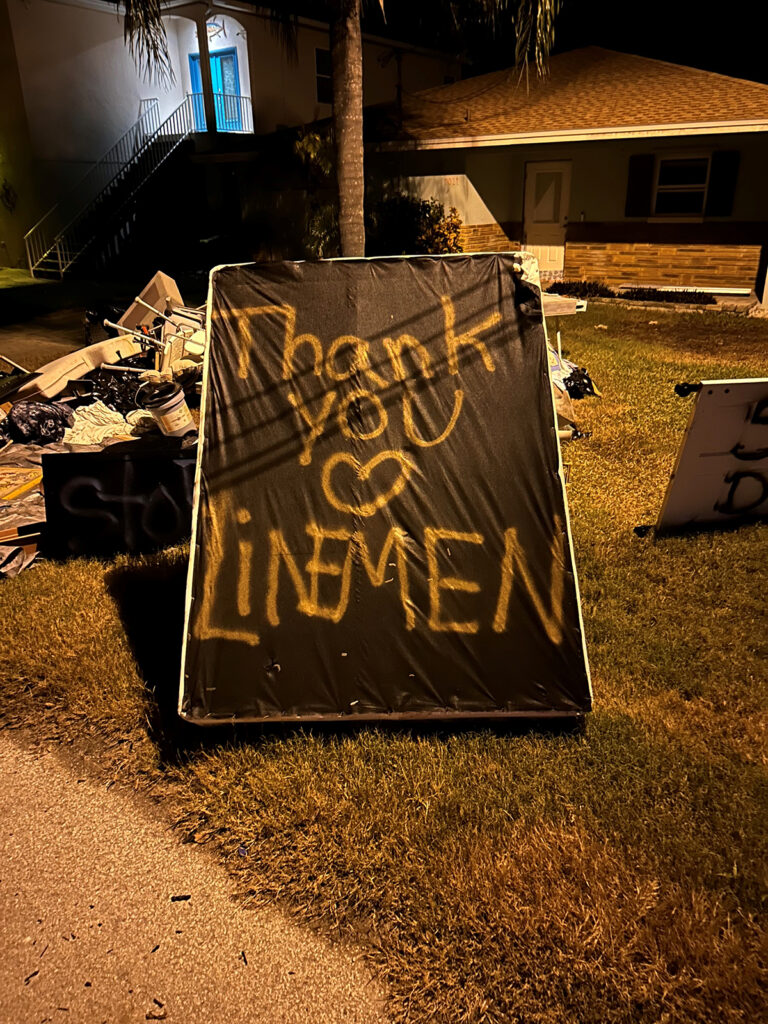
She considers herself fortunate because she retrieved some items and took on nine to 14 inches of water, less than some other residences. “You go through phases of rollercoaster rides. You’re like, ‘OK, I’ve got this, we’re almost there.’ And then you miss your house or miss being home,” said Blankenship, who moved into a travel trailer on her brother’s property before starting the process of rebuilding.
Their work helped them ease at least a little of the pain. “Working was the only thing that kept me really sane,” Simmons said. To Blankenship, going to the office helped take her mind off the situation. “Everybody is good about asking, ‘How are you doing, Gloria? How is it coming along?’ I love it here. I love this company.”
Simmons and Blankenship were two among many Withlacoochee staffers touched by the flood. One board member had six feet of water in his coastal home, Lambert noted. The co-op cut and cleared fallen trees so some of its employees could get to work.
“We’ve got a culture where we take care of our community. We take care of our employees because they’re like our family. Even though we have right at 600 employees, we are still a family. We’re not so big that we can’t take care of one another and then that hopefully is reflected in our relationships with our members,” Lambert said.
Storm-related costs for the double whammy of Helene and Milton totaled about $49 million, Lambert said, noting that the tab would have been even higher absent some of the system storm hardening Withlacoochee has undertaken in recent years. This summer, Withlacoochee has been part of hurricane expos and presentations designed to keep preparation on the top of the minds of its members.
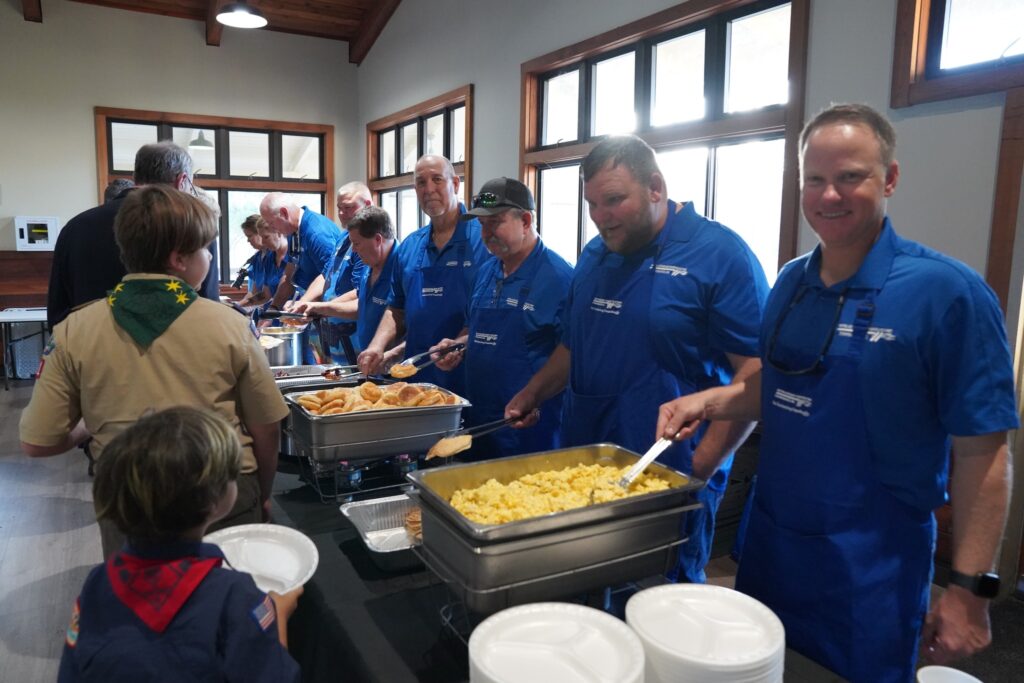
“We’re really pushing the message for folks to be prepared, tell your neighbors to be prepared, know the things they can do to prepare and where they can get help because we know from Milton and Helene that they are going to need it,” Steele said.
“Be prepared” is the motto of the Boy Scouts and a value at Withlacoochee. On Nov. 1, nearly three weeks to the day after Milton struck, Withlacoochee hosted a breakfast fundraiser for one of its partners, an annual event that had been postponed because of Milton. It raised $25,000 for the Boy Scouts of America Withlacoochee District.
Contributing writer Steven Johnson is a former managing editor at NRECA, where he started in 2005, and former editor of Cooperative Living and vice president at the Virginia, Maryland & Delaware Association of Electric Cooperatives
Banner Image Courtesy Withlacoochee River Electric Cooperative
